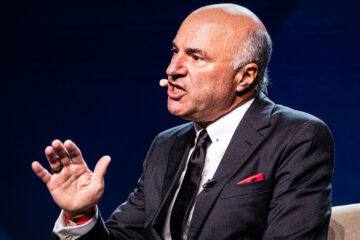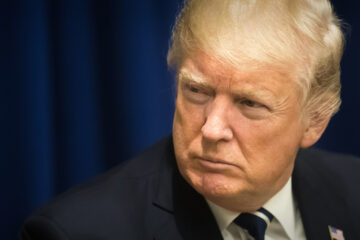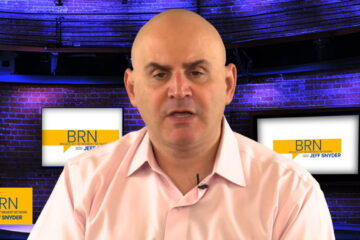Coffee lovers know that their morning Joe isn’t just a drink. It’s a necessity, and each day an estimated 2.25 billion cups of this rich, bitter beverage are enjoyed worldwide.
But in case you haven’t noticed (we know it’s still early), there’s been a huge shift in the way people drink their coffee — as cold brew — and credit goes to Starbucks for helping to fuel the trend.
💵💰Don’t miss the move: Subscribe to TheStreet’s free daily newsletter 💰
When did Starbucks start serving cold brew?
Cold brew dates back to the 1600s, when Dutch traders introduced coffee to Japan. Residents of Kyoto extracted the coffee using cold water, and the rest is history. (This is why cold brew is also known as Kyoto-style coffee.)
Once a novelty, available only in specialty shops like Blue Bottle and Stumptown, Starbucks first tested small batches of cold brew in a few stores in the Boston area in March 2015 — but there was one catch. Baristas only brewed one batch per day, or the equivalent of 40 grande cups, and so once it was gone, you had to wait until the store reopened to get your next fix.
Thankfully, due to customers’ seemingly unquenchable thirst for the chilled, caffeinated drink, a few months later, in July 2015, the coffee giant rolled cold brew out to the broader public, adding it as a core menu item to its 26,000 stores across the U.S. and Canada, and (thankfully) offering all-day availability.
Related: Starbucks pumpkin spice lattes: Everything you need to know about the iconic fall beverage
Starbucks’ Vanilla Sweet Cream Cold Brew made its debut in May 2016. At the same time, its Nitro Cold Brew, which infuses nitrogen gas into cold brew for a creamy texture and foamy head, also began being tested in a few stores, only to become a permanent fixture by 2019.
It’s safe to say that the coffee world hasn’t been the same since — CNBC reported that Americans spent $88 billion on out-of-home coffee purchases in 2023 and spending on cold coffees, like cold brew, has doubled since 2016.
Naturally, the place for coffee trends to get off the ground is at big coffee chains, like Starbucks, which is considered the leader of the coffee industry, with twice as many locations as its closest competitor, Dunkin’. The Seattle-based roaster reported that in 2024, three-fourths, or 75%, of its beverage sales were cold drinks, up from just 37% in 2013.
So, in light of the 10th anniversary of Starbucks’ cold brew, we take a look at its incredible ascent — as well as just who’s driving the shift.
Cold brew has been a popular fixture on Starbucks’ menus since 2015.
Andrew Francis Wallace/Toronto Star via Getty Images
What is cold brew?
Temperature isn’t the only difference between hot coffee and cold brew. Drip coffeemakers make coffee by using hot water to quickly steep ground coffee beans, resulting in an aromatic, yet slightly acidic cup of Java.
Cold brew, on the other hand, steeps coarse, ground coffee in cold water for a much longer timeframe, between 12 and 24 hours. This results in a smoother, less bitter—and, some even say, a naturally sweeter flavor.
Another added boost: Because of its longer extraction time, cold brew comes with higher levels of caffeine, roughly 25% more than regular coffee. According to the Center for Science in the Public Interest, Starbucks’ 16 oz. cold brew has 205 mg of caffeine while its 16 oz. iced coffee has just 165 mg.
Starbucks cold brew vs. Starbucks iced coffee
Just don’t confuse Starbucks cold brew with its iced coffee.
Starbucks’ cold brew is cold-steeped in filtered water, which produces a strong, full-bodied flavor with each sip.
Starbucks’ iced coffee, on the other hand, is more medium-bodied in flavor, though it actually boasts a double-strength serving of ground coffee, since it later gets diluted with ice. Starbucks typically uses four tablespoons of ground coffee for every six ounces of iced coffee (it uses just two tablespoons for hot coffee).
The drinks’ flavor profile differ, too. According to Starbucks, its cold brew contains a “natural sweetness with a hint of chocolatey flavor,” while its iced coffee has more “caramel and cola notes.”
Who drinks Starbucks cold brew?
Sipping on a steaming cup of morning coffee seems to be going the way of the dinosaur, lately.
These days, younger coffee drinkers — particularly members of Generation Z, ages 18-24 — have freed themselves from the perpetual drip-drip of a coffee machine, preferring cold ready-to-drink coffees and iced caffeine drinks, like cold brew, instead.
According to the National Coffee Association, 45% of coffee drinkers ages 18 to 24 said they had a cold coffee in the past day, and that Millennials are also increasingly enjoying their coffees cold.
More on Starbucks:
Starbucks fall menu: When it drops and what to orderStarbucks’ holiday menu: When it launches & what to orderStarbucks winter menu: What’s brewing in the colder months?
According to Starbucks’ founder, Howard Schultz, the reason has a lot to do with social media. Since cold drinks typically come in clear, plastic cups, younger coffee drinkers opt to order their beverages cold, customizing them with colorful syrups, cold foam, and sweeteners — which can be an easier way to introduce to the bitter taste to new palettes. They then share their creations on social media platforms like Instagram and TikTok.
Members of Generation Z are also characterized by their health-conscious lifestyles, and they say they are drawn to cold brew because it has fewer calories and ingredients.
Cold brew is not just for summer; 45% of Generation Z reported drinking a cold coffee in the past day, according to the National Coffee Association
Patricio Nahuelhual; Getty Images
Is Starbucks cold brew healthy?
A grande Starbucks cold brew, served black, has just 5 calories and 0 carbohydrates. (Adding milks and sweeteners changes things, of course.)
The Seattle-based chain does not offer decaffeinated cold brew, but customers who want the taste of coffee without the caffeine can substitute Starbucks’ decaf iced Americano.
And, in case you’re curious, cold brew can also be served warm: For a smooth and less bitter coffee experience, you can pop it into the microwave or heat in a saucepan on the stove.
Just don’t leave it sitting out. The product is non-pasteurized, so if kept unrefrigerated, it can spoil.
Related: Legendary fund manager makes bold stock market prediction


